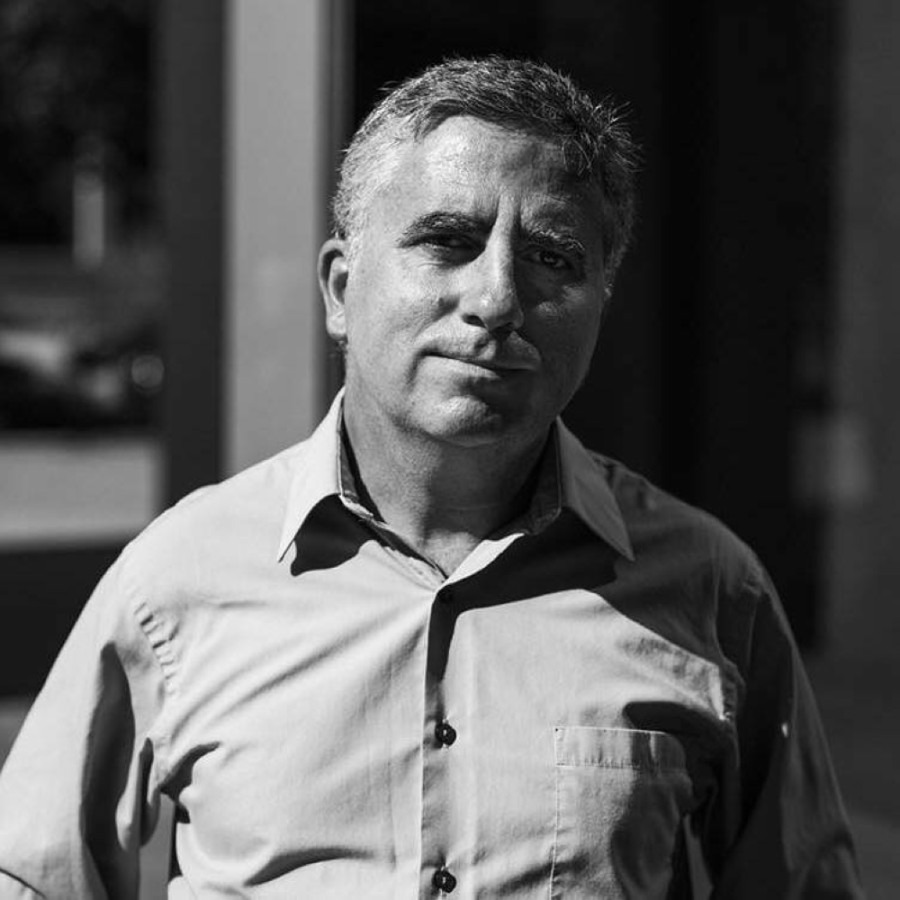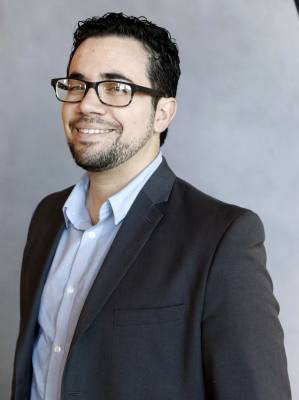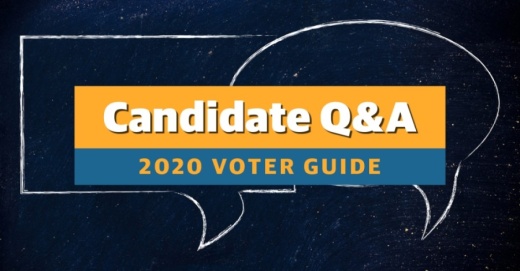AUSTIN ISD
BOARD OF TRUSTEES DISTRICT 2

Adolphus "Andy" Anderson
Candidate bio: For over 20 years, Anderson has served on committees which benefit student success along with neighborhood groups, including those affiliated with Austin ISD, the Texas PTA, and Austin Neighborhood Council in varying leadership roles. He said he began as part of the Campus Advisory Council at Rodriguez Elementary, where his child attended, and has also served on AISD’s District Advisory Council and the Budget and Finance, Boundary and Bond Advisory committees.
What are the biggest challenges facing District 2 right now, and how do those relate to what AISD faces as a whole?
AA: District 2 has not been served at the same level as other areas in AISD when it comes to resources and support. If District 2 fails, then AISD fails.
How would you grade the district’s COVID-19 response so far and what, if anything, would you have done differently if on the board?
AA: I would give the District a grade of an A related to Covid-19. We need to continue to provide resources for all such that their learning is not impeded. There have been actions already but we need to have resources also in place to maintain these initiatives.
Austin ISD voted to close four schools last fall as part of its school changes plan, with an assumption that another proposal for changes would be coming in 2020. How do you feel about the original plan, and what would you like to see going forward?
AA: The original plan had flaws in it most importantly community input and support. Before we go down that road, we need to look at boundaries first to balance the district. But always remember to have community input and support for any major initiatives such as this.
The district opened an equity office last year. How would you like to see the office used going forward?
AA: It has been a necessary move for AISD to have this office. I would like to see more support in providing the Equity Officer an actual contract and the staff necessary to train AISD in diversity and inclusion.
How can the district better retain its students as charter schools and other options continue to get established in AISD?
AA: The district needs to market the successes of their campuses more to show the benefits of what is being provided. By doing this, it will give pride to our students for their campus and thus may influence others to come.

Ofelia Maldonado Zapata
Candidate bio: Zapata has served as a community activist and organizer for the past 30 years to help residents of East and Southeast Austin. Ofelia has overcome a lifelong visual disability, domestic violence, and most recently, COVID-19, and said she knows District 2 families could overcome their challenges too if they were given a fair shot.
What are the biggest challenges facing District 2 right now, and how do those relate to what AISD faces as a whole?
OMZ: District 2’s biggest challenge is meeting students’ needs. Every other challenge—high dropout rates or under enrollment—stems from our students not having the basic resources they need to succeed. This directly reflects AISD’s challenge of overcoming its systemic racism. Our schools have always had resources taken away. Students fall behind, and the bar is lowered because they’re assumed to just have less potential. Let’s raise the bar, and invest in helping kids reach it.
How would you grade the district’s COVID-19 response so far and what, if anything, would you have done differently if on the board?
OMZ: I would give the district a C-. They were able to efficiently provide students with devices for distance learning, but didn’t address barriers in internet access and lack of training for students and parents. More importantly, the rush to resume in-person classes is too dangerous. I would have fought to keep our students and teachers home safe, and to make sure they all had academic and mental health support to navigate continued virtual learning.
Austin ISD voted to close four schools last fall as part of its school changes plan, with an assumption that another proposal for changes would be coming in 2020. How do you feel about the original plan, and what would you like to see going forward?
OMZ: I do not support school closures, and I feel that the original plan robs our underserved communities when instead the district should have put money back into those campuses to fill the gaps in resources between them and better-funded schools. Going forward, I want to see a stop to school closures and a focus on funneling time, money, and true community input into leveling the playing field for underperforming schools.
The district opened an equity office last year. How would you like to see the office used going forward?
OMZ: The equity office needs to evaluate campus and district leadership, and community partners, and enforce strict accountability measures to ensure they’re putting their money where their mouths are when it comes to resolving inequity. I also want to see the equity office prioritize identifying and diagnosing students with special needs early in their education so that these students, and special education teachers, are getting everything they need to succeed without sacrificing education outcomes.
How can the district better retain its students as charter schools and other options continue to get established in AISD?
OMZ: First we need to ask: how many students are leaving, and how many are just getting kicked out? Harsh discipline for poor and nonwhite students sometimes makes a charter their only option to continue their education. Parents feel so disrespected that when they see what seems like a better option, they take it. We need to repair the broken trust between parents and schools, and invest in providing tailored resources to meet students’ individual needs.

John McKiernan-Gonzalez
Candidate bio: McKiernan-Gonzalez became more involved with AISD when the district proposed to close the school his child attends in District 2 as well as others across the Austin community. He said he aims to support smaller schools and the Latinx community.
What are the biggest challenges facing District 2 right now, and how do those relate to what AISD faces as a whole?
JMG: COVID-19 is the biggest medical and economic challenge, especially in 78741 and 78744, which are the two most affected zip codes in Travis County. Getting the district to invest in more resources to help continue the ways staff and families have been turning schools into safe, welcoming, educational and stimulating anchors for students is the way forward, during and after this epidemic.
How would you grade the district’s COVID-19 response so far and what, if anything, would you have done differently if on the board?
JMG: Food service: A+. Service hub: A. Tech for students: A. Tech support for parents: B. Community outreach around COVID-19 plan: B. Staff support: Education Austin should have been at the table when crafting in-person and remote teaching plans. Summer plans: Too much time spent hiring a new superintendent, not enough time addressing the COVID-19 crisis in East Austin. I support a collaborative and public process for creating a long-range vision for addressing COVID-19.
Austin ISD voted to close four schools last fall as part of its school changes plan, with an assumption that another proposal for changes would be coming in 2020. How do you feel about the original plan, and what would you like to see going forward?
JMG: The plan selected 12 Black and Latinx majority schools- four in D2 and two against visible opposition. This ‘map of 21st century racism’ never acknowledged growth in the city of Austin or how wide swaths of Austin might respond to the razing of integrated schools in the most segregated school district in Texas. The FABPAC members, bond designers, consultants and Austin ISD upper echelons believe the illusion that transparent walls, open classrooms and pull-out spaces equate better schools. We must consider that teachers and students, especially those with disabilities, need privacy and quiet for classrooms to function.
The district opened an equity office last year. How would you like to see the office used going forward?
JMG: Given the broad inequities shaping Austin, the office must be trained to address the ways inequality structures planning and policy implementation. The new board should ensure the equity office is independent of the superintendent and of individual trustees on the board. I would like to see: Independent equity audit, to give direction to equity office planning; Extended contract to Dr. Stephanie Hawley; Office reporting directly to the board.
How can the district better retain its students as charter schools and other options continue to get established in AISD?
JMG: AISD needs to make an affirmative case for how they best support students and families. Charters can refuse acceptance based on ability and disciplinary history, and public schools outperform charters on established testing measures when income is held constant. AISD, should have school fairs in accessible public venues, like charters do, so parents can get a sense of the communities connected to each school and how they are sup. The reasons why people move to charters need to be understood and addressed as well as how these choices affect the funding of public schools.





